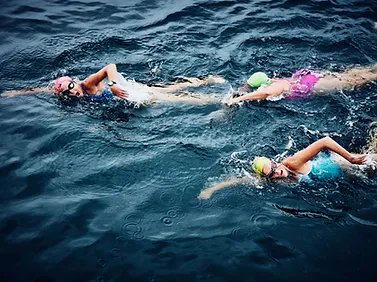Shoulder
(Subacromial)
Bursitis
Injury Guide

Subacromial bursitis is a condition that commonly affects athletes, causing pain and discomfort in the shoulder area. One of the main symptoms of subacromial bursitis is persistent pain in the shoulder, particularly when performing overhead movements or activities that involve lifting or reaching. This pain can be sharp or dull and may worsen at night or with repetitive motion.
Anatomy:
Subacromial bursitis involves inflammation of the subacromial bursa, a small fluid-filled sac located between the rotator cuff tendons and the acromion, which is a bony projection on the shoulder blade. Understanding the anatomy of this condition is crucial in comprehending its implications and the resulting symptoms.
The subacromial bursa acts as a protective cushion between the tendons of the rotator cuff and the acromion. Its role is to reduce friction and provide smooth gliding during shoulder movements. However, repetitive overhead activities or trauma can lead to irritation and swelling of this bursa, causing subacromial bursitis.
When the subacromial bursa becomes inflamed, it can lead to several implications for athletes. Firstly, the increased fluid and inflammation in the bursa can compress the underlying rotator cuff tendons, leading to pain and reduced range of motion. Athletes may experience difficulty in raising their arms overhead, reaching across their body, or performing repetitive motions, hindering their athletic performance.
Secondly, the inflamed bursa can cause impingement of the rotator cuff tendons against the acromion. This impingement can further exacerbate the pain and limit shoulder mobility. Athletes may experience a painful arc of motion, where the pain occurs during a specific range of movement, typically between 70 and 120 degrees of shoulder abduction.
Moreover, subacromial bursitis can contribute to muscle imbalances and altered shoulder mechanics. Athletes may unknowingly compensate for the pain by altering their movement patterns, leading to overuse of certain muscles and underutilization of others. This imbalance can result in shoulder instability and increased risk of further injury.
When recovering from subacromial bursitis, emphasize the importance of addressing the inflammation, restoring proper shoulder mechanics, and promoting muscular balance during rehabilitation.
By targeting the inflamed bursa, improving the function of the rotator cuff muscles, and addressing any underlying muscle imbalances, athletes can effectively manage subacromial bursitis and regain pain-free shoulder function. Through a comprehensive rehabilitation program tailored to the specific needs of athletes, they can overcome the anatomical implications of this condition and return to their sports activities with confidence.
The primary cause of subacromial bursitis is inflammation and irritation of the subacromial bursa, a small fluid-filled sac located between the rotator cuff tendons and the acromion (a bony prominence on the shoulder blade). Overuse or repetitive movements, such as throwing, swimming, weightlifting, or excessive overhead activities, can lead to the development of this condition. Direct trauma to the shoulder or an underlying rotator cuff injury can also contribute to the inflammation.
Rehabilitation strategies play a crucial role in managing subacromial bursitis and helping athletes return to their optimal performance levels. Physical therapy is a highly effective treatment approach that aims to reduce pain, restore shoulder function, and prevent future injury. A personalized treatment plan will be designed by a skilled physical therapist based on the individual athlete’s needs and goals.
In the initial phase of rehabilitation, the focus will be on reducing pain and inflammation. This may involve the use of ice or cold therapy, gentle range of motion exercises, and modalities such as ultrasound or electrical stimulation. The physical therapist will also educate the athlete on modifying activities to avoid exacerbating the symptoms and provide guidance on proper posture and body mechanics.
As the athlete progresses, the rehabilitation program will shift towards restoring strength, flexibility, and stability in the shoulder joint. Specific exercises will be prescribed to target the rotator cuff muscles, scapular stabilizers, and surrounding muscle groups. Strengthening exercises may include resistance bands, weights, or body weight exercises to gradually increase the load on the shoulder.
In addition to strength training, flexibility exercises are essential to improve range of motion and prevent muscle imbalances. Stretching techniques for the chest, shoulder, and upper back muscles may be incorporated to restore proper alignment and reduce stress on the shoulder joint.
Throughout the rehabilitation process, a physical therapist can monitor the athlete’s progress, making necessary adjustments to the treatment plan as needed. They can provide guidance on gradually returning to sports-specific activities and ensure proper technique and form to prevent re-injury.
Let’s
Work
Together
Ready to get started? Click here. General questions? Read our FAQ page. Have a specific question? Leave us a message!
